Down load form from “Connect with us”, sign and make payment.
See the Mohair News Tile at left. This story reports the parallel events and efforts reported in the Murray-Prior article in the December Mohair News. Obviously there was a lot going on in the 1980’s. Clearly there was great interest in Angoras and a deal of support, both politically and scientifically. Of interest was the difference between political support and private financial backing from largely uncoordinated individuals.
Also see the Mohair News tile at left. The second part of the importation story is also offered from Stapleton (2017). This was more complicated and has not been publicly reported in as greater detail. Obviously while allowed by the Federal government, it did not follow the original proposal discussed below.
(see the green Newsletter tile at left)
Referring to the article by Geoff Murray-Prior. This is a fascinating insight into the workings of the early AMBA office in Canberra and the interaction with the Federal Government Cabinet. I have added material from Chapter 7 of Mohair : Farming the Diamond Fibre (Stapleton, 2017).
See the green tile to the left for recent News Letters from Hunter and Victoria.
Also see “Connect with us” for the new Renewal Membership form for 2021. Membership due on 1st January.
See the Mohair News side bar for the third paper

See the Mohair News side bar for articles on hand spinning
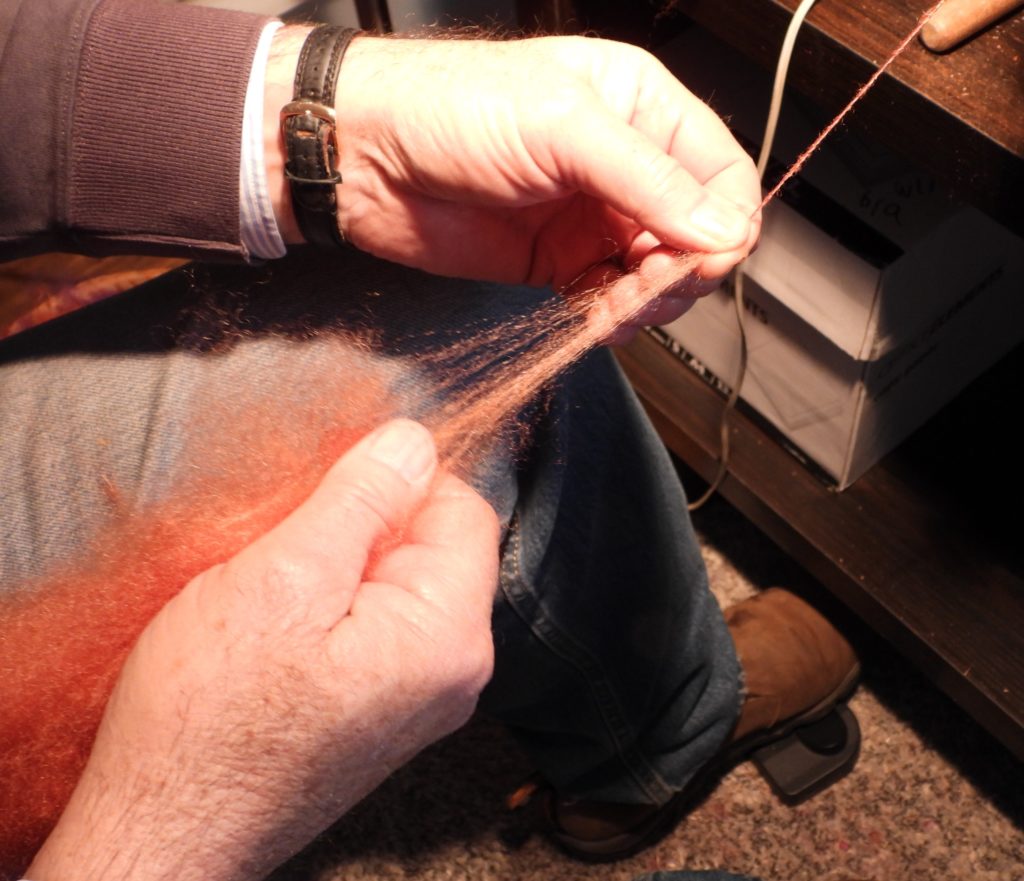
What happens when the autumn is mild and wet? Apart from a sigh of relief from feed short graziers, you get an early germination of weeds. In the central west we get catheads, Bathurst burrs and karki weed germinate and grow on summer storms but we won’t talk about them. As well with a damper early break to the season we get early germination of Variegated Thistle, Marsh Mallow and Paterson’s curse. A warmish winter allows them to flourish.
Now stands of Variegated thistles can be spectacular with masses of forests 10 to 15 feet high often covering an acre or more. While the thistle shadows out pasture plants, eventually they go to head and stock love them. (But if sprayed or cut they can cause Nitrate poisoning.)
Equally spectacular can be Marsh Mallow (Gardening Australia wonders if this is not Common mallow). This winter has seen some remarkable stands. ABC talk-back has had reports of plants 2.5m high – with photos of submerged utes etc. I don’t think stock like it so it continues to grow.
Finally there is Paterson’s Curse, not so spectacular, YET. But come spring “the hills will come alive” with purple Riverina Blue Bells”. While horses are supposed to suffer poisoning, sheep and goats seem to cope well with this weed.
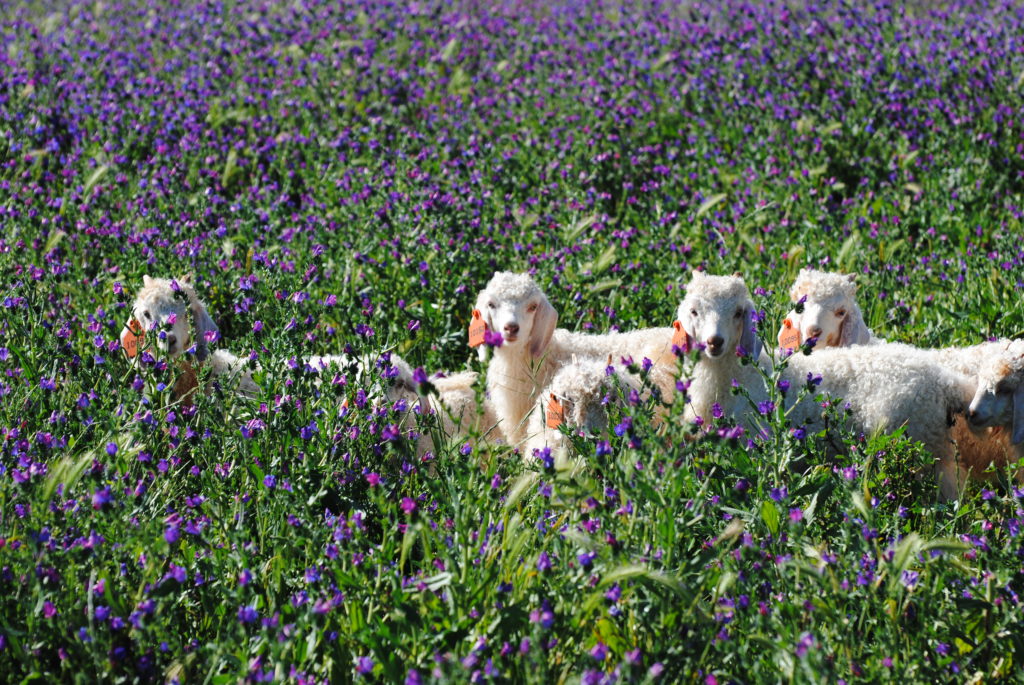
This webinar is to allow discussion of the document prepared by Schuster Consulting Group P/L and published by AgriFutures Australia. To be held on Wednesday 29th July at 12.30 (till 2.00pm).
Registrations: Please register by email to [email protected]
by Monday, 27 July 2020
We make more progress, sort of. The new Herd Book System went live on the 22nd April but there are some problems. You will need a new password. Contact Doug Stapleton 0408681610 or [email protected] to set a one. List Animal and List Members searches now work properly Add Animals and Transfers also work but there are issues with litter size and DOB’s but we are getting there. Please don’t save anything at present and Don’t Panic. DS
How to work this site. Now you can pick which page you wish but new stuff starts here with NEWS. Latest news is on top. Most of the pages however are static with routine information for the public and members who need forms etc. Much of the information is up to date but more will be added. Did I complain about the editor program? “All else fails, read the instructions ” Right? Well, talk about a tidal wave. Everything has already been thought about and made available. BUT where to start! DS
Here begins a rework of the mohair site. This will be something of a steep learning exercise. Not only am I overseeing the redevelopment of the Herd Book, but also learning how to edit pages you see and supplying some “content”. Now, content is the real purpose of a web site. Its not easy because you have to make real comment and supply graphic material including photos.
Content can be on the page or it can be stored with a link, or the link can be to another web site or published material. Working on a site rapidly becomes complicated. Please let me know if you have a comment or even a paper which might be published here. Send articles and comments to [email protected] . Thank you for your patients. DS
I was asked at NATS why the List of judges only contained NSW people. Well – it’s a NSW list. My answer was followed by another question – Why isn’t there a National list? That required a more complex answer. First, the NSW list is the result of a long-standing development policy started by Frank Wroe using Judging schools, Associate Judges and finally, after an apprenticeship appointment as a Full judges. Second, the development of a Judging Guidelines document in 2002. This document followed consultation with other Divisions. Third The approval of the then National Board (which was obtained though there was some disagreement specifically from Victoria which wanted to use their own guidelines).
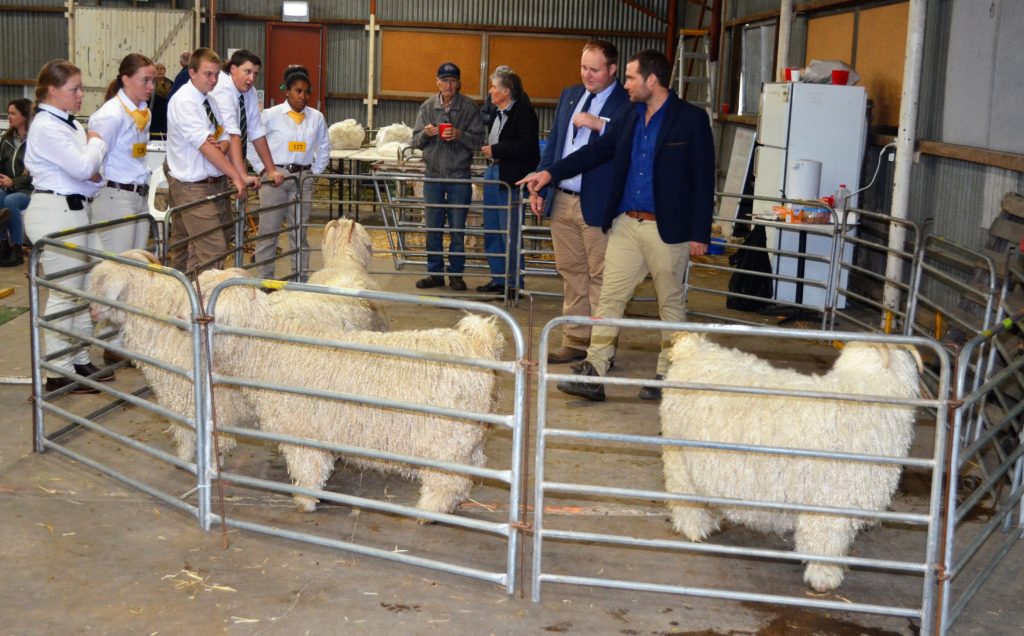
Photo above. Here is the judge explaining to his associate judge while judging the NATS.
This led to a third question of whether the National Board should make appointments to a National Judging panel. From my experience it was decided against doing so, or rather not to pursue the idea. The reason can only be guessed at. Probably because there were too many more important issues at the time but also the danger of perceived nepotism.
In any event, there is only the NSW Division’s list because NSW is the only Division with an appointment process. So that is where the situation stands.
Recently I was asked by the NSW Division to update the 2002 document. This has been done and the draft document was sent to all Associate and full NSW Judges. A copy of the updated document is available from the Mohair News tab at the top left of this page.
Not really Angoras but still central to our existence. I thought I might put a few comments down to see if it applies to everyone. I am continually frustrated with the Windows 10 operating system. Now it may be because I want to do things my way, instead of the Microsoft way. But still; much of computing in the past has claimed a good deal of intuitive method. Not anymore. Windows (or Microsoft) wants to do it it’s way and tries to help – well the difficulty is that “help” is not intuitive.
Specifically, the file system is confused by the One Drive system. I know it’s meant to make computing available on multiple machines including smart phones which seem to be taking over being THE mobile platform but here is the point – using Word, for instance, and when you want to save your work, it asks you for a file name (OK) but then it says “Don’t worry, we’ll put it somewhere”. For those of us who write a lot, how do you find where it puts stuff?
And, the other example. Where does it put photos? You don’t need to know if you use the Windows photo system which puts camera downloads into albums and One Drive will even pick out interesting groups of photos for a slide show (without asking until it wants to show you what its chosen). “Go away!”, all I want is access to my camera files so I can copy specific photos into Word documents. So, where are they????
Now I have plenty of other issues and you might have them as well. The thing is that Microsoft has built a multi-language operating system which does everything. You just have to ride along and now we have to pay for Office 360 (every year) and it automatically up-dates. Some have to pay for One Drive and of course Windows 10 also updates, not uncommonly when you just want to use the computer in a hurry – but I digress. What I really want is Widows 7 and the old Office programs.
March and April have seen unprecedented rain. This is not normal for the Central West which usually suffers a mini drought in these months of the year. One could ask “What’s going on, but thank you anyway?” Who knows. Are we lucky or is this further example of disturbed climate?
In any event the early rains have changed the picture for the winter. IT’S GREEN! And the oats have been planted, to be followed by the canola and (later by) the wheat. It’s hoped that the rains continue into the spring so we can see hay and grain harvests. Of course, global warming has not gone away and whatever the long-term effects of that turn out to be, we will have to see over a longer time frame.
Independent report on the AMMO A2020 sale held on Friday 6th March.
AMMO presented some 24,200 kg of mohair in 39 lots (134bales). Three mills were represented with two buyers operating for Stuckens, Sudwalle and AMT (presumably SAMIL).
Bidding was energetic with prices reported to be similar to the South African sale held earlier in the week. A complete clearance was achieved after negotiations on 7 lots.
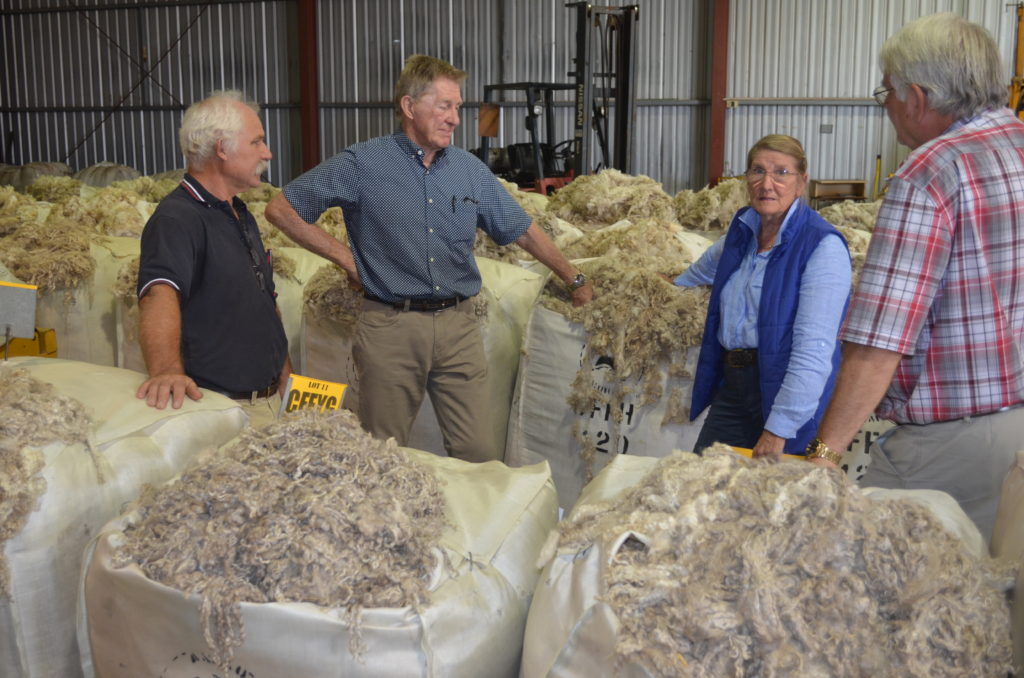
Growers chatting with buyers.
The quality of the offering was considered very good with most lots edging on the longer edge of the coded descriptions. The mohair again reflected the finer trend of Australian mohair in recent offerings. Again, the quantity of very short mohair was of concern. A complete summary of test results and prices is attached. Prices were again strong with a 25.2um lot of 272kg of BSFK reaching $48.15/kg greasy, 139kg of BSK (28.5um) bringing $42.60, a 207kg lot of BSFFYG (29.3um) bringing $35.00, a 226kg bale of BFYG bringing $30.10, an 11 bale lot of CFH (32.4um) bringing $24.20 and a 5 bale lot of CFH (34.7um) bringing $20.00. Outsorts generally sold well with CXFH (kempy adult) bringing $12.80, 8 bales of SCOT $24.95 and STN (light stains) $20.30.
Some concern is expressed at the size of the offering given that no sale was held in November 2019. Prices for mohair would seem conducive to increased production but it is recognised that drought and high meat prices present potential growers with impediments to increasing stock numbers. Not to mention the time required to grow numbers by normal reproductive means.
Don Carter with Supreme Angora – Lynndon Grove
Now here is some interesting reading. Click the link below to see the guidelines developed for South Africa. This is a very detailed document and it shows how serious the South African industry takes the development of a public image and an industry practice.
Some points:
South African Sustainable Mohair Production Guidelines
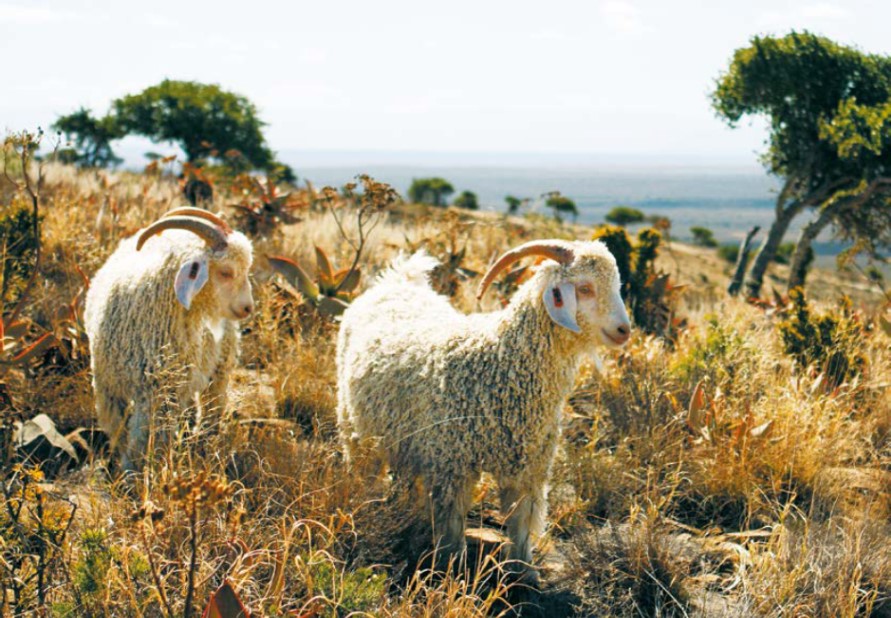
Watch the Mohair South Africa Brand Film (come on – its not hard. Go to “Partners, Mohair South Africa and click the clip”). Think about the messages!!!!